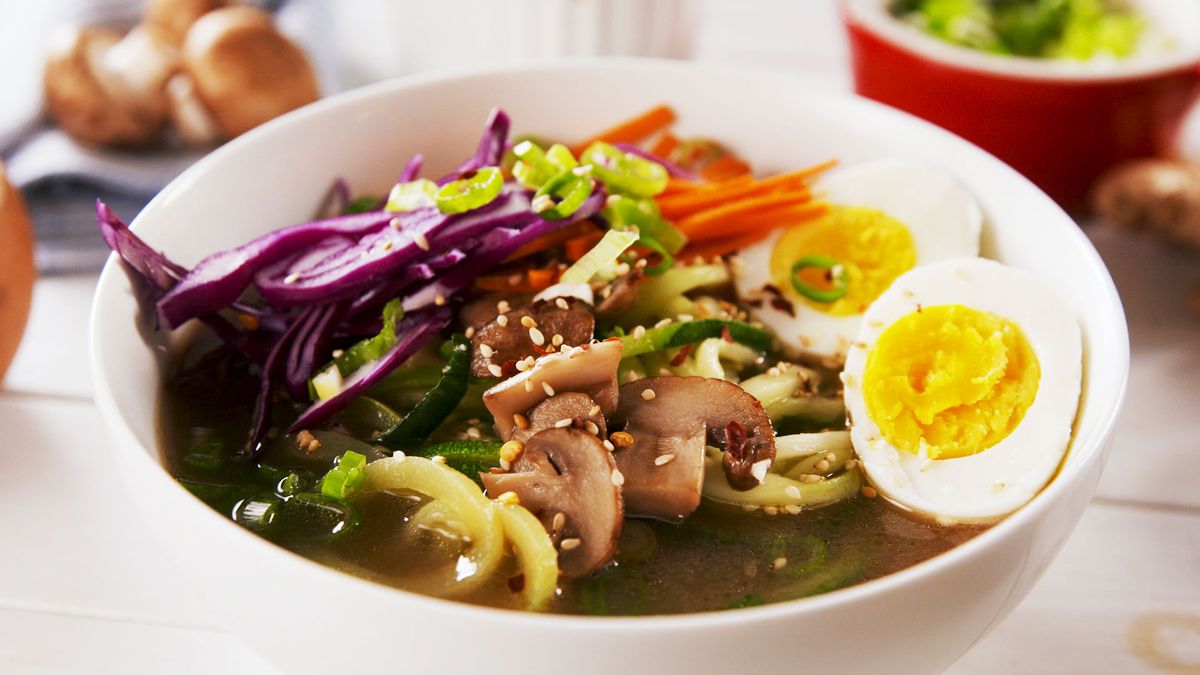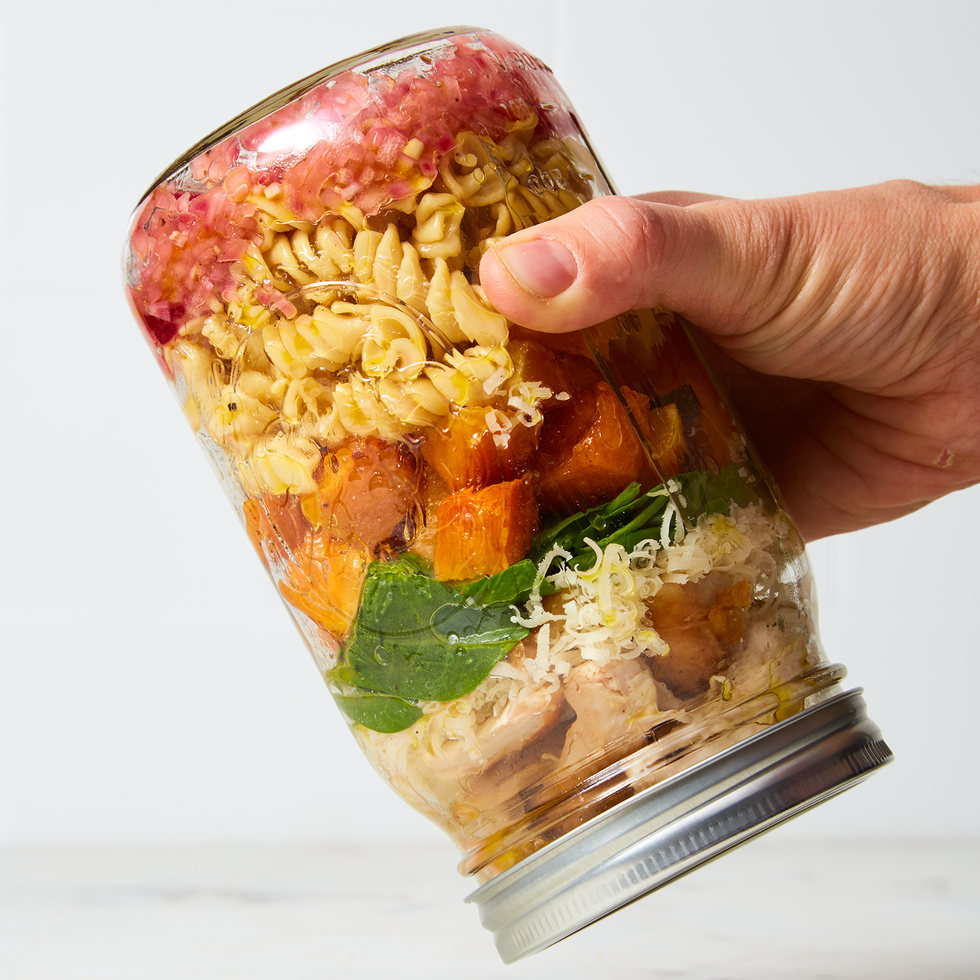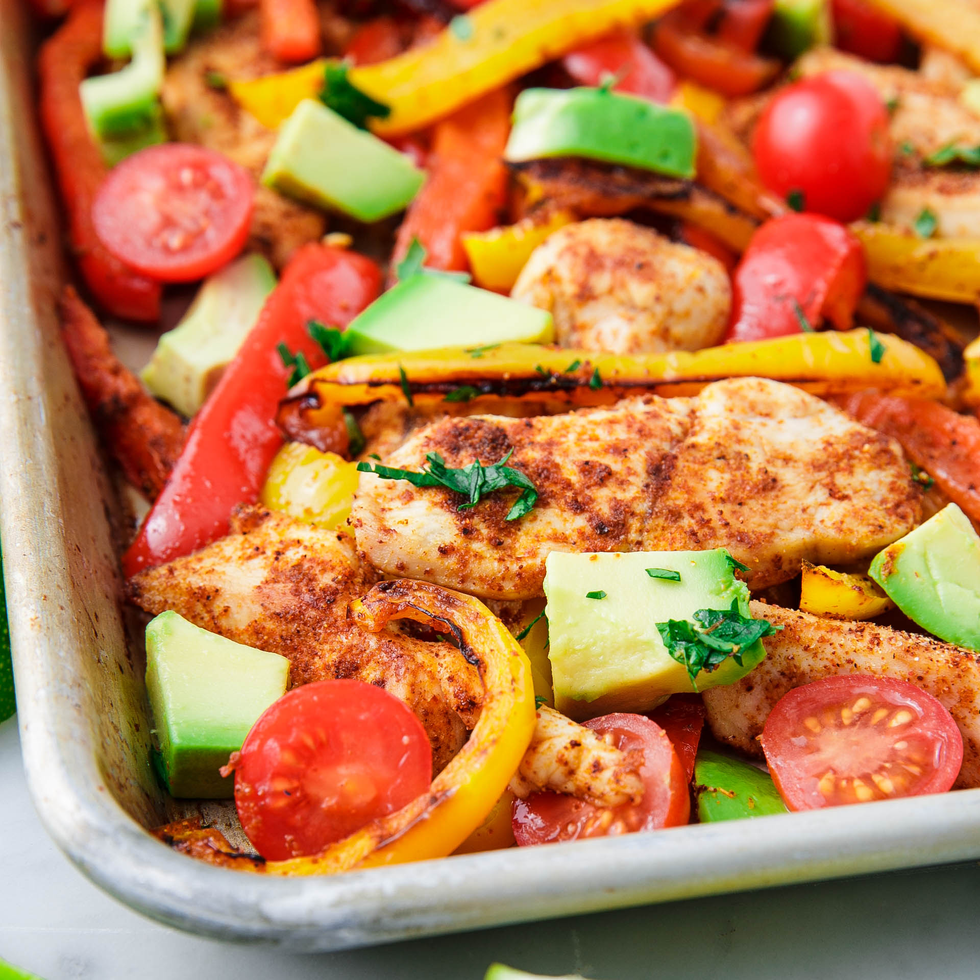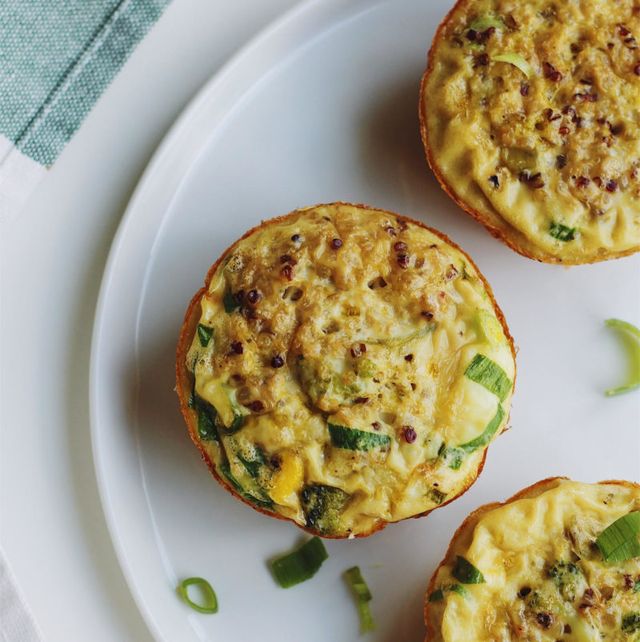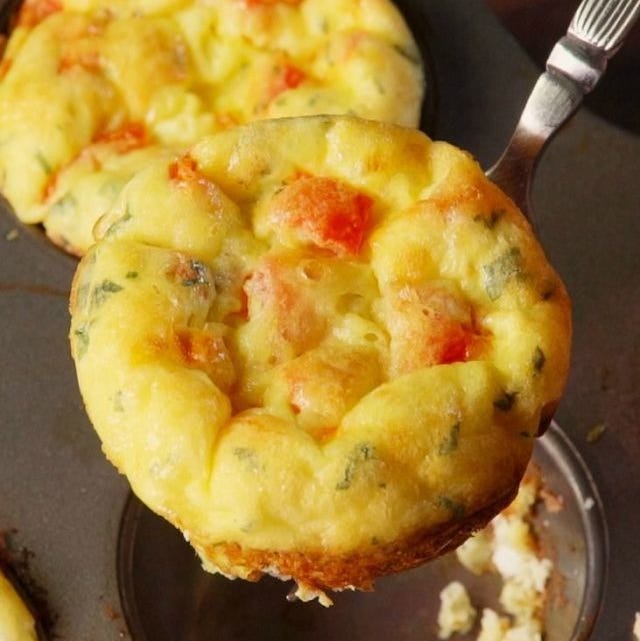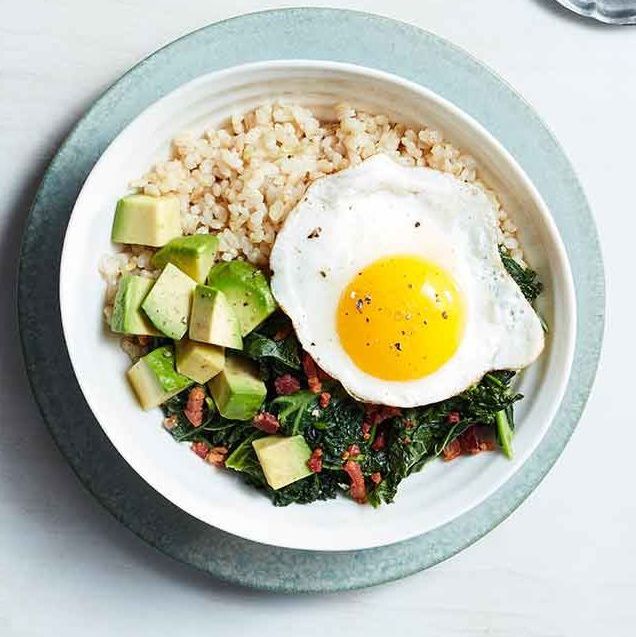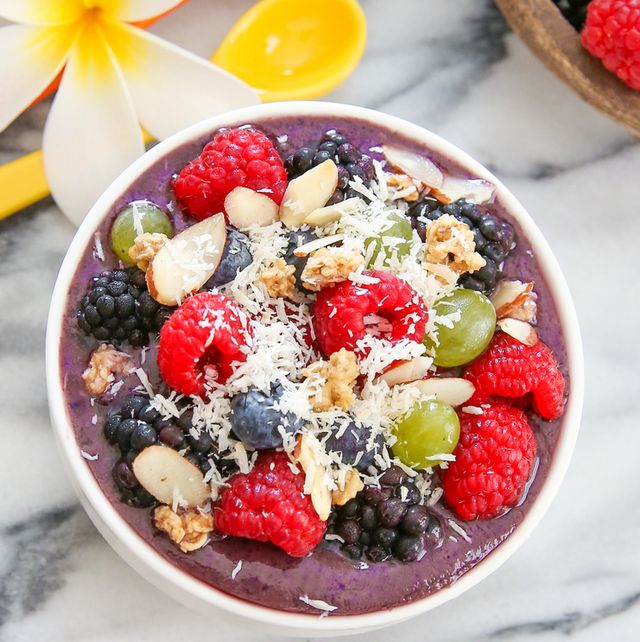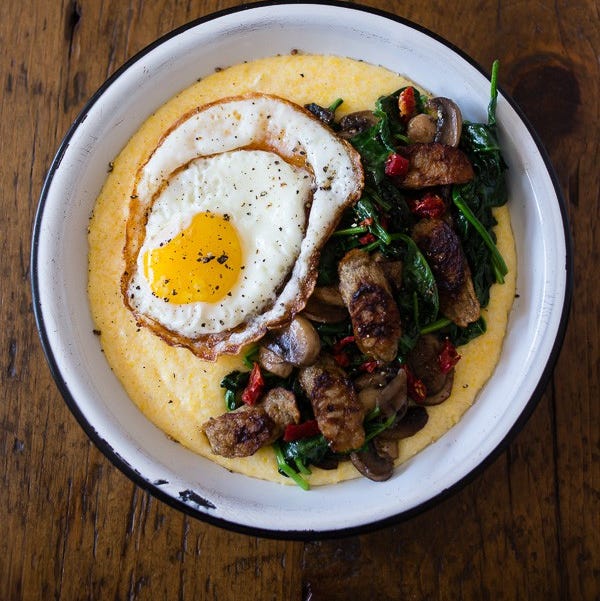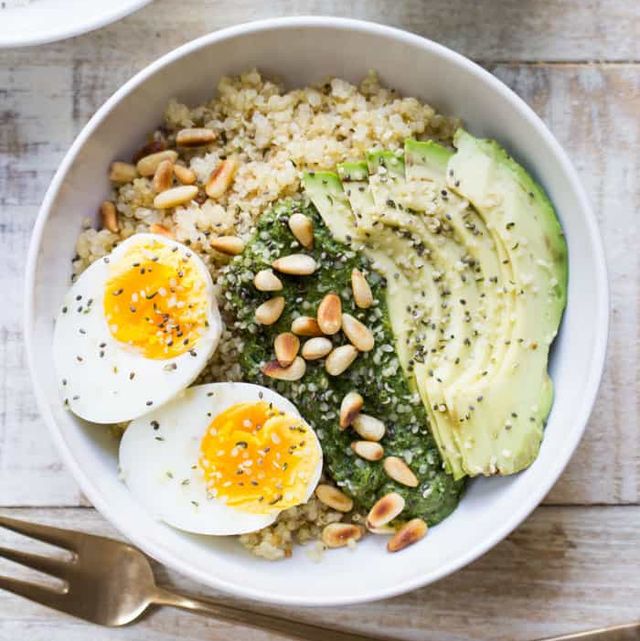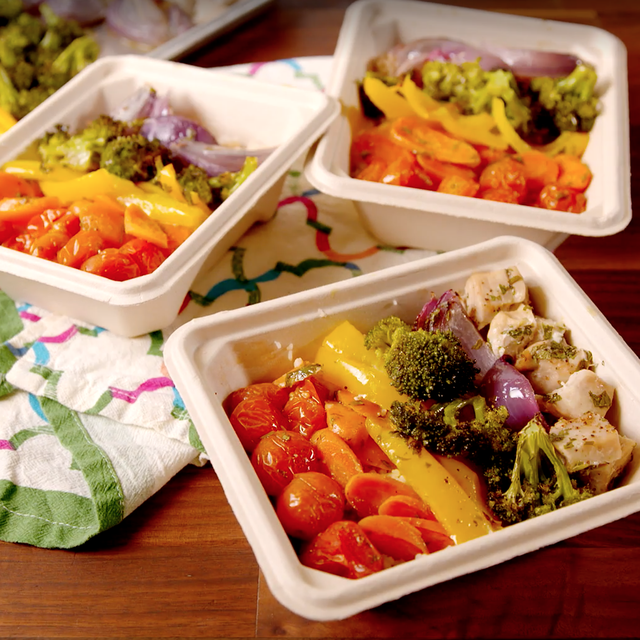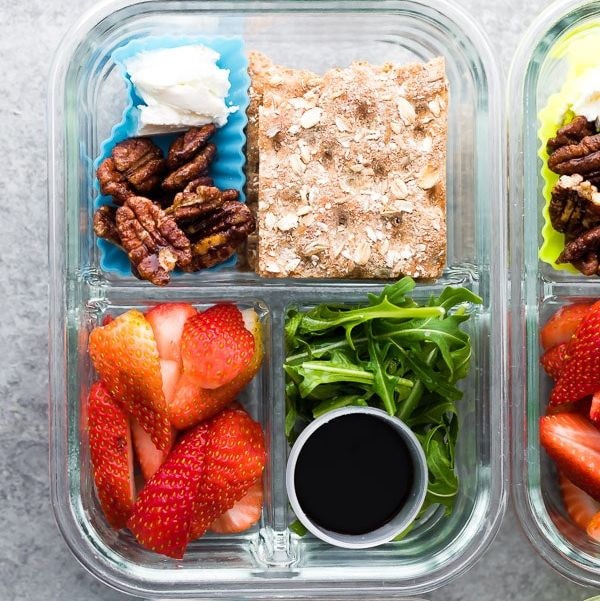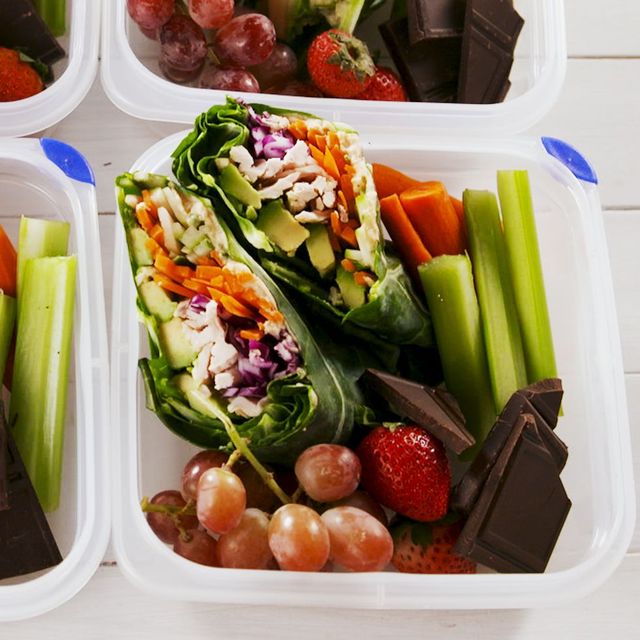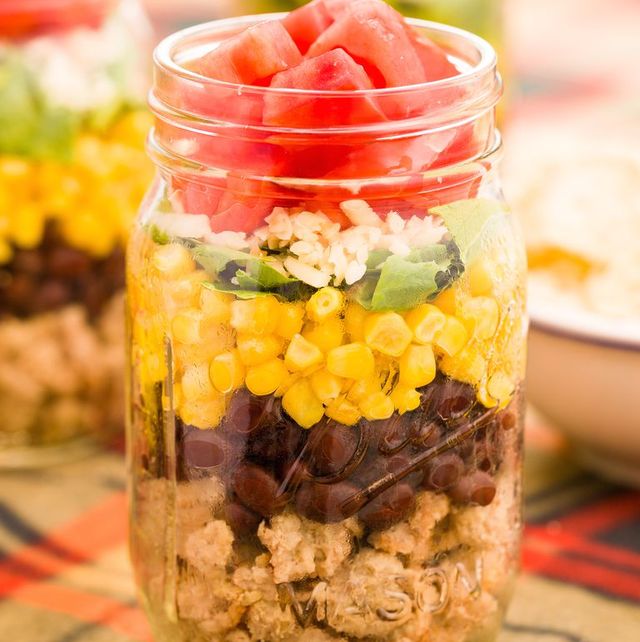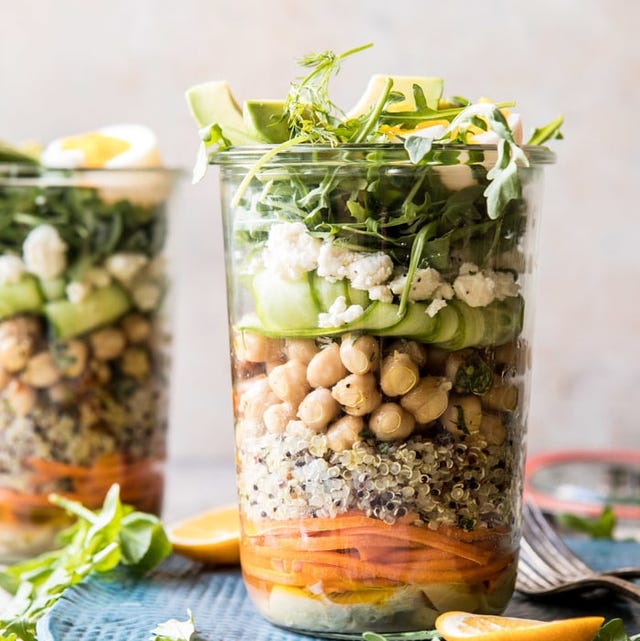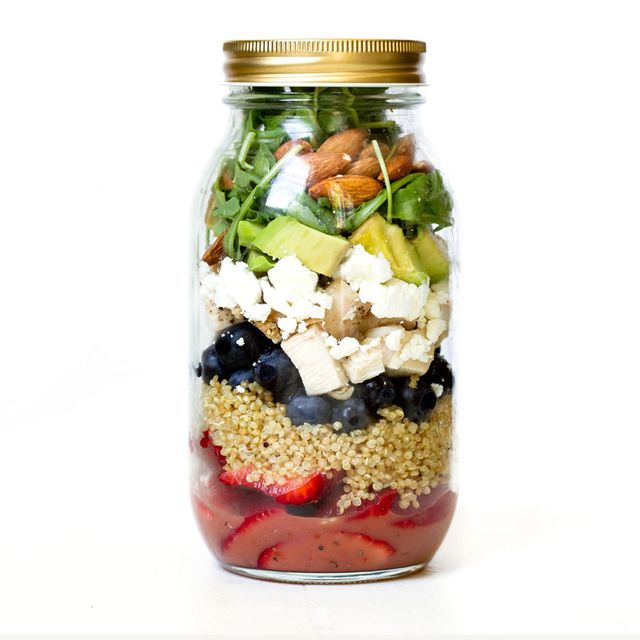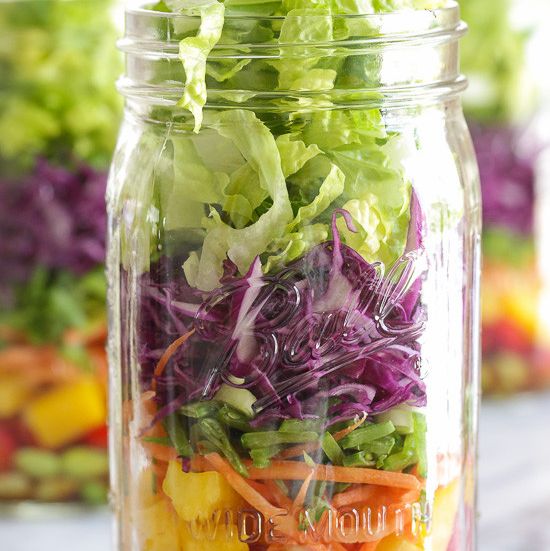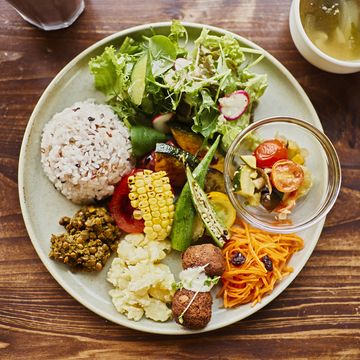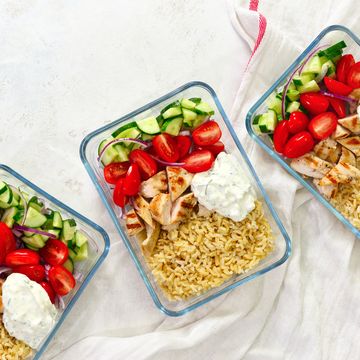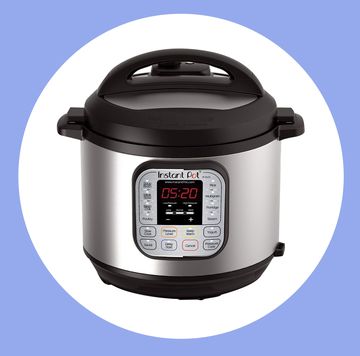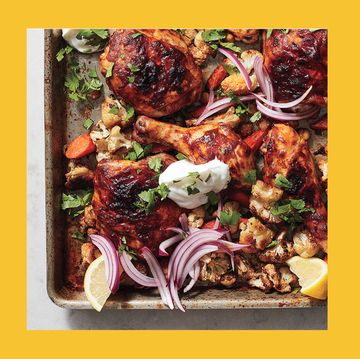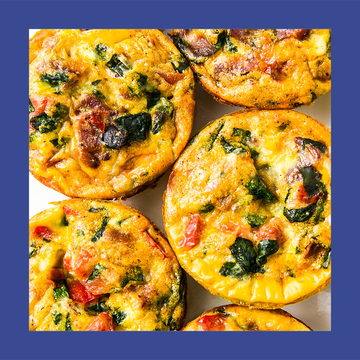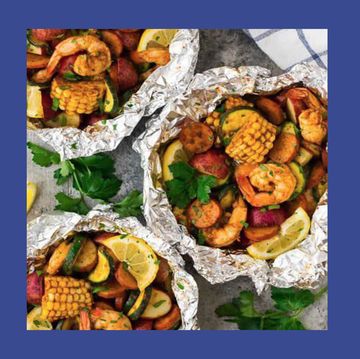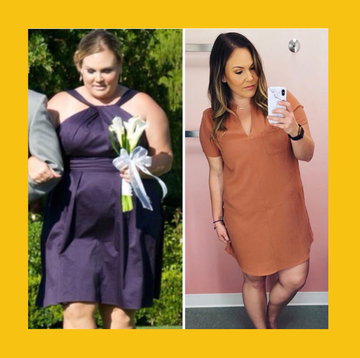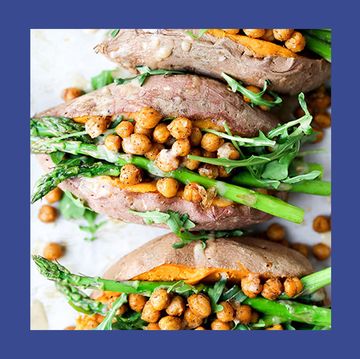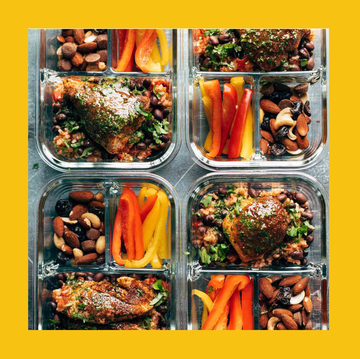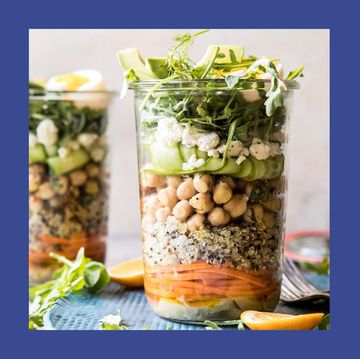The problem: You’ve committed to eating healthier, but you haven’t magically received an extra hour a day to cook better-for-you meals.
The solution: Meal prepping.
The concept of planning and making your meals in advance isn’t exactly Earth-shattering. But if you’re short on time and still want to eat well, it can be a game-changer. Here’s everything you need to know to get started with meal prep.
In this article:
• What is meal prepping?
• Benefits of meal prepping
• How to meal prep: a step-by-step guide
• Healthy meal prep ideas
What is meal prepping?
It’s super straightforward. Meal prepping just means planning your meals in advance and cooking them in one big batch. It’s a simple tool that can make healthy eating easier—which can be especially helpful if you’ve resolved to try to lose weight. Instead of cooking dinner every single night when you get home or throwing lunch together every morning before running out the door, you’ve got a good-for-you meal ready whenever you are.
Benefits of meal prepping
That might sound a little complicated at first. But it’s actually pretty easy once you get the hang of it—especially when you consider the benefits:
You are more likely to eat nutritious meals
After all, there’s zero reason to order takeout if you already have homemade turkey chili or salmon with veggies waiting for you when you get home at night. (Same goes for breakfast and lunch: You don’t need to pick up a pastry or a slice of pizza if there’s wholesome stuff already packed in the fridge that you can grab before heading out the door in the morning.) And if you choose to pack up your prepped meals in individual servings, voila!—you’ve got instant portion control.
You save time in the long run
You’ll spend an hour or two up front to prep your meals, sure. But when you add it up, it’s still less than the 30-45 minutes you otherwise would’ve spent making dinner every night. You won’t have to go shopping multiple times a week, either.
You might save some money on your grocery bill
Having a shopping list with all the ingredients you need for the week can help you steer clear of impulse buys. Planning meals in advance often means less food ends up going to waste too.
You might lose weight (if that's your goal)
When you divide up your meal prep recipes, you wind up with perfectly portioned breakfasts, lunches, and dinners—which makes it a whole lot tougher to overeat.
How to meal prep: A step-by-step guide
You’re convinced meal prepping is the way to go, so let’s give it a try. Here’s exactly what you’ll need to do to get started.
Step 1: Pick a meal prep method
Make-ahead meals should be able to last for five or so days in the fridge. You also want to be able to make them relatively quickly, so you don’t end up spending an entire day in the kitchen. (Your entire prep session should take an hour or two, tops.) Three smart cooking methods that fit the bill:
• Sheet pan meals: With these, you load all of your ingredients onto one big baking sheet and bake them at the same temp, for the same amount of time. Sheet pan-cooking works especially well for protein and veggie combos--think flank steak with sliced peppers and onions for fajitas, or chicken with potatoes, carrots, and broccoli.
• One-pot meals: Like sheet pan meals, except that your cooking vessel is a big pot. It’s perfect for big batches of soup, stews, chilis, or curries.
• Mix-and-match: Here, you prep components individually instead of all together, so you can eat them in different ways. Think roasting a big batch of veggies or grilling several chicken breasts that you can use in salads, or sandwiches, or tacos. This method offers a little more versatility, but it can also be a little more time-consuming.
You don’t have to commit to just one of these methods, of course. In fact, using two or even three can help you make the most of your kitchen time. For instance, you could have a pot of lentil soup simmering on the stovetop while sheet-pan fajitas roast in the oven.
Step 2: Map out your meals
Now that you have the basics down, it’s time to decide on your meal plan for the week. Do this a day or two before you plan to cook to give yourself some breathing room. If you’re planning to cook on Sunday, for example, put your plan together on Saturday morning.
As for what to make? The possibilities are pretty much endless, but things don’t have to get overwhelming! Here’s what I like to do, and what I’ll often recommend for clients starting out:
• Focus on dinners. Pick three recipes, aiming for a mix of different ingredients and flavor profiles to keep things interesting. Each one should have a lean protein, a complex carb, a veggie, and some healthy fat. Try poached salmon with roasted potatoes and cauliflower, meatballs with whole wheat pasta and steamed broccoli, or roast chicken with baked sweet potatoes and a green salad. Think about ways to utilize time saving ingredients when possible, like buying a rotisserie chicken instead of roasting it yourself or getting salad greens that are already washed and chopped. For each recipe, plan to make a few extra servings of protein.
• Mix and match for lunch.Use the extra proteins from your dinners as the base for quick, easy meals, like and salads or sandwiches. Keep a rotating list of extra ingredients for these and buy whatever else you’ll need (like prewashed salads greens or whole wheat bread) and prep anything extra (like peeling and shredding carrots or roasting cubed squash).
• Take advantage of leftovers. You don’t need to make a different dinner for every single night. Toward the end of the week, get creative by building meals with whatever’s still in the fridge. Shred some of that rotisserie chicken into store-bought minestrone soup, for instance, or make a frittata with any vegetables that are still hanging around.
Step 3: Make a grocery list and go shopping
You know what’s on the menu, so it’s time to gather your supplies. Making a grocery list doesn’t just keep you on track at the market—it ups the odds that you actually remember to get everything you need, so you don’t have to swing back to the store later in the week. (Another time-saver—yay!)
So: Before you go shopping, look over your meal plan and write down each and every ingredient you’ll need. Since the goal is to make this the only grocery run of the week, remember to add any other items you might want to stock up on, like nuts or whole grain crackers for snacking.
Now you’re ready to hit the store. I like to go shopping the day before I plan to cook, so I can hit the ground running in the kitchen when it’s time to meal prep. But if you find it easier to do the shopping and cooking in a single shot, you can certainly do everything in one day.
Step 4: Cook!
Set aside an hour or two to cook your meals and prep any other ingredients or components (do this on shopping day or the day after). Before getting into the kitchen, come up with a game plan to make the most of your time. Start the longest-cooking items first, followed by the ones that cook quicker. And multitask when possible. You can cook hard-boiled eggs on the stovetop for salads while roasting a sheet pan dinner in the oven, for example. Meal prepping is all about maximizing your efficiency, after all!
Step 5: Pack it up
Once all your food is prepped, it’s time to put everything away. Packing up your food doesn’t have to be a big production, but a little bit of strategizing now can make your life easier when it’s time to eat. (Not to mention ensure that everything fits into the fridge!) That’s where having the right storage vessels comes in. At the minimum, you’ll want to have:
• Clear glass containers with lids in various sizes. Picking glass over plastic nixes the risk of harmful chemicals like BPA leaching into your food. Glass containers are also durable, stackable, and see-through—so you know what food is in what container and how much is left. Store full batches of sheet-pan or one-pot meals in larger containers or portion out individual servings in smaller ones that you can grab before heading out the door. Pack up mix-and-match components each in their own containers, too, so things don’t get jumbled together.
• Glass jars. They’re perfect for storing dressings, sauces, and soups. You can also use them as to-go containers for things like smoothies, yogurt parfaits, salads, or soups.
• Zip-top bags. Gallon-size bags are great for storing full meals or big batches of mix-and-match components; smaller ones work for individual portions or on-the-go snacks. (Just allow food to cool before packing, to help prevent the plastic from leaching.) Bags aren’t as durable as glass, of course. But they’re convenient (no need to wash ‘em!). And since you can lay them flat, they take up less room in the freezer or fridge.
Most packed and prepped meals will stay good in the fridge for up to five days. That said, you should always go with your gut here: If you’re nearing the end of the week and something looks off or smells funky, that’s a sign that it might be spoiled. Don’t eat it! Planning to eat anything beyond the five-day mark? Just stash it in the freezer right after cooking. There, most items will stay good for six months.
Healthy meal prep ideas
Get more breakfast egg muffin recipes >>
Get more breakfast bowl recipes >>
Get more bento box ideas >>
Get more mason jar salad recipes >>
Isabel Smith, MS, RD, CDN, is a nationally recognized registered dietitian and a health and lifestyle expert. She is the CEO and founder of Isabel Smith Nutrition and lives in New York City with her two Yorkshire Terriers, Sasha and Henry. Isabel holds a Registered Dietitian License, a Bachelors of Health and Exercise Science from Gettysburg College, and a Masters of Science in Nutrition Communications. Isabel was trained in all areas of clinical nutrition at New York Presbyterian Hospital in New York City and has worked with patients at other highly esteemed Academic Medical Centers including Dana Farber Cancer Institute and Hospital for Special Surgery. Throughout her training, Isabel also trained under some of the best Integrative and Functional Medicine Dietitians and Clinicians and uses her Integrative and Functional Wellness training together with her clinical background when working with clients and groups.
In her private practice, Isabel works with clients in the areas of oncology, weight loss, hormone balance, thyroid health, digestive health (celiac, IBS/IBD, allergies and sensitivities), weight loss and intuitive eating, athletic performance, blood sugar control and diabetes, and more. Isabel also works with corporations and corporate executives to promote healthy eating and mindfulness/stress management.


